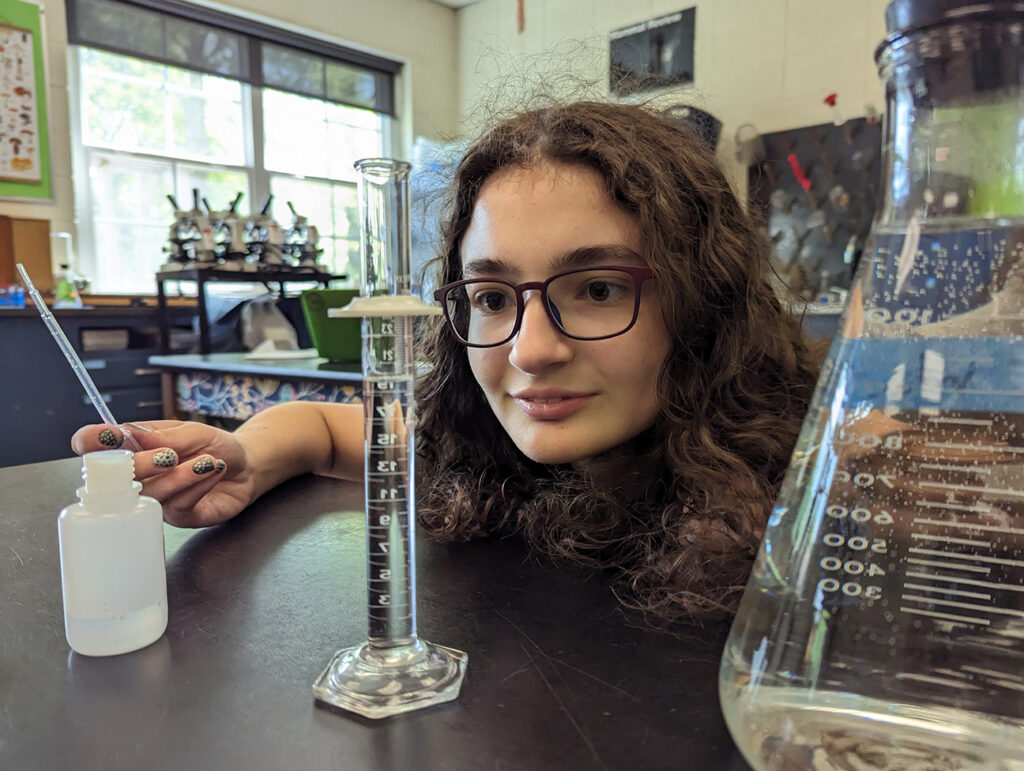An interview with Dr. Heather York
“I’m not a molecular biologist. My expertise is ecology—the study of relationships between living organisms and their environments. I get excited to bring my interest in birds, mammals, and bugs into my classes.”
Zoologist and science teacher Dr. Heather York is passionate about bringing animal ecology into the classroom so students can practice lab techniques while also learning about creatures found in nature. Dr. York already introduces her students to birds and mammals on campus through hands-on experiences each spring, and insects have always been a favorite group to study in her zoology course. This year, a new animal has crawled its way into her Watkinson classes. After she attended a 2023 summer workshop on tardigrade biology, Dr. York established a student-centered research project exploring these tiny animals and the microbes that live within them.
Dr. York explains, “Tardigrades, microscopic 8-legged animals also known as “water bears” for their small-scale resemblance to slow-motion polar bears, can be a bit hard to find. York’s zoology students peer through microscopes to examine mosses and lichens—the creatures’ favorite habitats—and use tiny tools that they’ve made themselves to wrangle the tardigrades into vials for further study. A bacterium, called Wolbachia, is well-known to live within insects, arachnids, and other arthropods, causing all kinds of changes to how they reproduce and even impacting their evolution. Interestingly, Wolbachia has also been found in tardigrades but has not been studied very extensively within these often overlooked microscopic hosts.”
To seize the opportunity to turn students’ classroom observations of tardigrades into a novel, long-term research project exploring the ecology of Wolbachia, Dr. York knew she needed some scientific tools that weren’t in her budget. Finding bacteria within already miniscule tardigrades requires molecular biology lab techniques that target certain pieces of DNA within the tardigrades collected by the students. Fortunately, York was able to reach out to colleagues from her doctoral fellowship program at the University of Kansas, who now work for large institutions like Seattle Children’s Hospital and the University of Minnesota, to inquire about equipment that might be going unused. She also applied for grants for lab chemicals from the Wolbachia Project and New England BioLabs.
Thanks to a response that Dr. York describes as, “both immediate and very generous,” she now has a molecular ecology teaching lab, decked out with a full set of high-tech equipment that her students are already beginning to master. This spring and beyond, students will be exploring tardigrades and their microbial partners in a teaching space that brings biology to life.
Want to know more about Watkinson’s private school science curriculum? Do you have access to research tools to help our students? Contact us!
Photo by Heather York.



